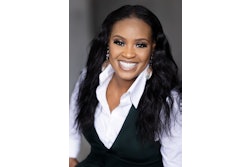Late last month, as part of a highly ambitious research effort on
African American education, the first volume in a series of reports on
the state of education in Black America was released.
The African American Education Data Book, Volume I: Higher and
Adult Education is a 504-page report that is massive and unprecedented
in its compilation of research and statistics exploring the
participation of African American students, faculty and institutions in
postsecondary education. It was produced by the Frederick D. Patterson
Research Institute of The College Fund/ UNCF which was founded in 1996.
The report represents a major achievement for William H. Gray III,
the president and CEO of The College Fund/UNCF (formerly known as The
United Negro College Fund). Gray, who was a member of the U.S. House of
Representatives from 1979 to 1991 and was named temporary envoy to
Haiti in 1994, helped establish the new research institute named for
Frederick D. Patterson, who founded the UNCF. The institute plans to
release volume two, covering pre-school through twelfth grade
education, and volume three, discussing school-to-work and
school-to-college issues, before the end of the year.
“When I was in Congress, I was continuously frustrated by the lack
of good statistics on Black people in higher education,” Gray said.
“People were trying to make public policy based on very limited data.
It was like trying to understand a baseball game by looking through a
knothole in the fence where you can only see second and third base.”
Some of the report’s most significant findings are:
* Black enrollment in higher education is at an all-time high with
African Americans making up 10.1 percent of all undergraduate students.
This exceeds the previous high of 9.4 percent, which was reached in
1976. By 1984, the rate of participation had declined to 8.8 percent.
* Black enrollment in first professional schools — such as
medical, law and pharmacy — is also at a historic high of 7 percent.
Since 1977, the number of first professional degrees increased 71
percent, although the number of master’s degrees declined slightly
(20,892) and the number of doctorates was virtually unchanged (1,344).
* The past two decades saw particularly dramatic gains in the
number of degrees awarded to African American women. Since 1976, there
has been a 219 percent increase in first professional degrees, and a 55
percent increase in undergraduate degrees. Black men registered
respective increases of 5.1 percent and 20 percent.
The institute began with a level of economic support that was
unusual among Black institutions. The Charles Stewart Mott Foundation
donated $2 million and The College Fund/ UNCF contributed another $3
million to establish an endowment to support five staff members and two
external consultants. The Pew Charitable Trusts provided funding to
offset printing and distribution costs.
In order to develop the comprehensive database, Gray tapped Dr.
Michael Nettles to be the institute s first executive director. Nettles
is a professor of education at the University of Michigan, which has
helped to underwrite his salary at the institute. For the past seven
months, Nettles and his research assistants performed secondary
analysis on forty different national databases. Their work was aided by
the Sun Microsystems, which donated a state-of-the-art server and IBM,
which provided several extremely powerful personal computers. Armed
with this new equipment, Nettles and his staff were able to access huge
amounts of information.
“We were able to download statistics from the World Wide Web,
floppy disks, compact disks, and old fashioned main frame-data tapes,”
Nettles said. “We looked at studies and surveys from the National
Center for Education Statistics, the National Science Foundation, the
U.S. Bureau of the Census, and the National Department of Labor
databases. We are using the High School and Beyond Survey, the
Beginning Post-Secondary Student Survey — which tracks people over
time — and the National Educational Longitudinal Survey conducted by
the U.S. Department of Education.”
Currently, the institute is the only Black think tank that focuses
exclusively on education. Nettles hopes that its reports will provide a
data source that goes beyond the Status Report on Minorities in Higher
Education, published by the American Council on Education (ACE).
However, he points out that there is considerable overlap between both
sets of figures covering trends in enrollment.
According to Nettles the institute’s research covering adult
education, financial aid, and issues of testing and assessment is more
comprehensive than ACE’s report. Nettles also points out that in most
cases, the institute s statistics on Black students are usually
presented alongside comparable numbers for whites, Asian, and Hispanic
students. The institute is also accumulating extensive data on
international students.
So far, all of the statistics presented in the institute’s report
have been compiled from secondary analysis of existing sources.
Explained Nettles: “These statistics were originally collected for a
particular purpose and the agencies that gathered them issued reports
that answered specific questions. However, by reanalyzing the same
data, we were able to answer new questions. We have also been doing
statistical tests on some of the non-census data so we can see if these
findings are statistically significant beyond the level of chance.
After we put out the three volumes this year, we are hoping to move on
to doing original surveys.”
Some of the original research that the institute is contemplating
over the next few years is designed to try to find answers to the
following questions:
* What attitudes have contributed to the phenomenal growth in the
number of Black women enrolled in college and professional schools?
* Which factors did African Americans who are college-bound take
into account in their decisions to attend college, and where? The
institute is particularly interested in understanding how Black
students perceive the payoff of going to college; in other words, what
do they expect their earning potential to he if they don’t go to
college versus what they expect to earn if they graduate.
* What needs to be done to improve the grades of African Americans?
* Do college performance factors, such as completion rates or
grades, have any correlation with the level of personal financial
investment (total expenses minus any financial aid) an individual
actually makes in going to college?
“We have been working very hard to get off to a fast start,” said
Nettles. “We have been plowing some new ground and the work has been
extremely rewarding. I recently made a presentation to the National
Caucus of Black State Legislators and they were very excited by the
idea that they had some really good new data, because most of the
action in educational reforms is taking place at the state and local
levels.”
Taking an interest in the educational status of all 34 million
African Americans — from pre-schoolers through adults — represents a
major departure for The College Fund/UNCF. The fund has traditionally
restricted its concern to private historically Black colleges and
universities (HBCUs). The National Association For Equal Opportunity in
Higher Education (NAFEO) has been the primary representative for all
HBCUs. However, by instituting such a comprehensive research project,
The College Fund/UNCF may be positioning itself to become the
preeminent voice for all of Black education in the United States.
“We’re not ready to go that far yet,” laughs Nettles, “but this is
a very logical extension of the UNCF’s interest. In order for African
American students to succeed in higher education, we need qualified
applicants. And the best way to improve and expand that pool in the
future is to begin cultivating and improving it today. When you look at
the Class of 2010, you have to think about kindergartners. And if
you’re thinking about the Class of 2015, you have to worry about
one-year-olds.”
[Graph OMITTED]
COPYRIGHT 1997 Cox, Matthews & Associates
© Copyright 2005 by DiverseEducation.com















